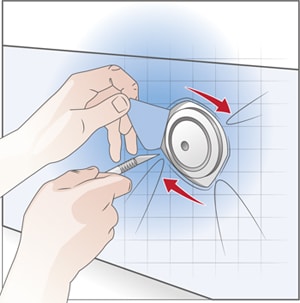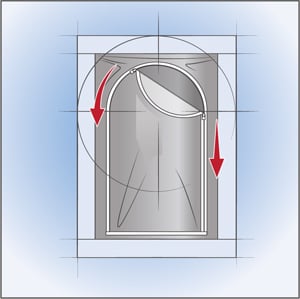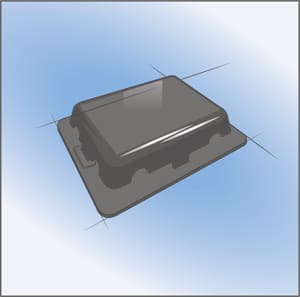Once the leaves fall to the ground and the first frost chills the morning, it’s a good time to store your boat for the winter. Wrapping it up in plastic is one of the best ways to keep it safe and dry, but the job isn’t done after you’ve shrunk the wrap with a heat gun. Without vents, the plastic shrink-wrap will trap condensation inside your boat, a surefire way to cause mildew and mold problems. Plus, you have to allow access for the fuel tank to breathe through its vent. And if you want to access your shrink-wrapped boat at all, maybe to do some off-season maintenance or to hide out and drink a beer, you’ll need to add a zipper door. The good news is that this is the easy part. Here’s what you need to know.

The Fuel Vent
Before you started the shrink-wrapping process, you should have taped off the fuel vent so as not to ignite vapors with the heat gun. Once you’re done, you need to remove that tape to allow for fuel tank ventilation. Dr. Shrink (dr-shrink.com) recommends sticking a piece of tape below the bottom edge of the wrap to mark where the vent is above it. Then follow up and cut a small hole in the wrap with a film-cutting knife. (A regular razor knife will do.) Peel the tape off the fuel vent, and add a vent over the hole. How? See the third column.

Shrink-Wrap Doors
Doors are easy to install. They come in sizes ranging from 30 by 36 inches to 36 by 72 inches, so depending on your boat size, you can have a cubbyhole or a walk-through door. Tape the zippered door to the spot where you’d like it using shrink-wrap tape. Make sure to put the curved end — or the bottom of the U — at the bottom of the door. Once the door is installed, open it and cut out the shrink-wrap section inside the frame, and then zip it back up. Then go in and do some tinkering or enjoy that aforementioned secret beer.

Shrink-Wrap Vents
Adding vents is simple. Cut a hole in the wrap smaller than the purchased vent, small enough so the edges of the vent’s flange have space to adhere. There are two types of vents: passive and solar. Passive are two parts, the vent itself and a protective cap to keep out the elements. Solar vents have a small solar panel on top that powers two tiny circular fans to help ventilation. Stick the adhesive side over the hole, and then stick your fingers through the vent and squeeze the wrap and the vent frame, until it holds tight. Add the cap and you’re good to go.









